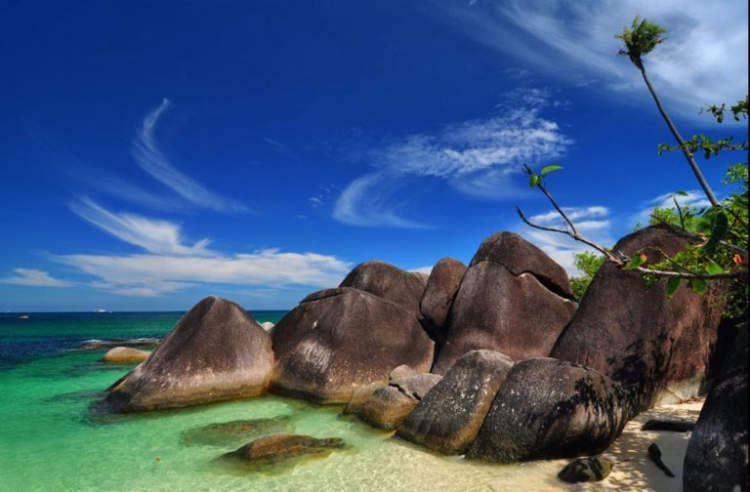Planning a trip to Japan? You might be wondering, “Can I travel to Japan?” Well, let’s dive into the details and find out everything you need to know before packing your bags and embarking on an unforgettable adventure to this fascinating country.
Traveling to Japan – The Basics
Before we get into the nitty-gritty, let’s start with the basics. Japan is a gorgeous island nation located in East Asia, renowned for its unique blend of ancient traditions and modern technology. From bustling cities like Tokyo and Osaka to serene countryside landscapes, Japan has something for everyone.
Now, let’s address the question you’ve been asking: Can you travel to Japan? The answer is yes! Japan welcomes tourists from all around the world. However, there are a few essential things you should consider before planning your trip.
Visa Requirements
First and foremost, you need to check if you require a visa to enter Japan. Fortunately, citizens from many countries, including the United States, Canada, the United Kingdom, Australia, and most European countries, can enter Japan as tourists without a visa for up to 90 days.
It’s important to note that visa requirements may vary depending on the purpose and duration of your stay. If you plan to work or study in Japan, you’ll need to obtain the appropriate visa beforehand.
The Best Time to Visit Japan
Choosing the right time to visit Japan can make a significant difference in your travel experience. The country boasts distinct seasons, each offering its charms.
Spring (March to May) is famous for the mesmerizing cherry blossoms, while autumn (September to November) paints the landscapes in vibrant hues of red, orange, and yellow. Summer (June to August) is perfect for exploring Japan’s beautiful beaches, and winter (December to February) offers incredible skiing opportunities in Hokkaido.
Language and Communication
One common concern for travelers is the language barrier. While Japanese is the official language, English is widely spoken, especially in popular tourist destinations and larger cities. Many signs, menus, and transportation announcements have English translations, making it easier to navigate around the country.
However, learning a few basic Japanese phrases can go a long way in enhancing your travel experience and showing respect to the locals. Phrases like “arigatou” (thank you) and “sumimasen” (excuse me) can help you connect with the friendly people of Japan.
Transportation in Japan
Japan is famous for its efficient and extensive transportation network, making it a breeze to explore the country. From bullet trains (Shinkansen) that connect major cities to a well-developed subway and bus system, traveling within Japan is convenient and comfortable.
Consider purchasing a Japan Rail Pass, which offers unlimited travel on JR trains for a specific period. This pass can save you money if you plan to visit multiple cities and regions.
Traditional Customs and Etiquette
Embracing Japanese customs and etiquette will make your trip to Japan even more rewarding. Here are a few essential tips:
1. Bowing: Bowing is a common form of greeting in Japan. A slight bow is appropriate in most situations. The depth of the bow depends on the context and the person you are interacting with.
2. Shoes: In Japan, it’s customary to take off your shoes before entering homes, temples, and traditional ryokans (inns). Look for shoe racks or designated areas to store your shoes.
3. Onsen Etiquette: If you plan to visit a traditional hot spring (onsen), remember to wash your body thoroughly before entering the bath. Tattoos are generally not allowed, so be sure to check the rules beforehand.
4. Chopstick Etiquette: When dining at local restaurants, be mindful of chopstick etiquette. Avoid sticking chopsticks vertically into your food and passing food from chopstick to chopstick.
Must-See Attractions in Japan
Japan offers a plethora of incredible attractions that cater to all interests. Here are some must-see places:
1. Tokyo: The bustling capital city of Japan is a vibrant metropolis that seamlessly blends modernity with tradition. Explore iconic landmarks like the Tokyo Skytree, visit the historic Meiji Shrine, or immerse yourself in the vibrant atmosphere of Shibuya Crossing.
2. Kyoto: Known for its numerous temples, shrines, and traditional gardens, Kyoto offers a glimpse into Japan’s rich cultural heritage. Don’t miss the stunning Kinkaku-ji (Golden Pavilion) and the famous Fushimi Inari Taisha Shrine with its thousands of red torii gates.
3. Hiroshima: A city with a tragic past, Hiroshima is now a symbol of peace and resilience. Visit the Peace Memorial Park and Museum to learn about the devastating impact of the atomic bomb and pay homage to the victims.
4. Osaka: Famous for its vibrant street food culture and lively atmosphere, Osaka is a food lover’s paradise. Indulge in local delicacies like takoyaki (octopus balls) and okonomiyaki (savory pancakes) at Dotonbori, a bustling food district.
Conclusion
In conclusion, the answer to the question “Can I travel to Japan?” is a resounding yes! Japan welcomes tourists with open arms and offers a unique blend of ancient traditions, modern marvels, and breathtaking natural beauty.
Remember to check the visa requirements, plan your visit according to the seasons, and familiarize yourself with the local customs and etiquette. Explore the must-see attractions and immerse yourself in the rich culture and history of Japan. Don’t forget to capture unforgettable memories and savor the delectable cuisine along the way. So, pack your bags and get ready for an incredible journey to the Land of the Rising Sun!



